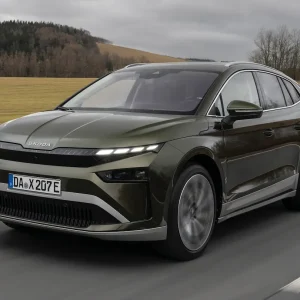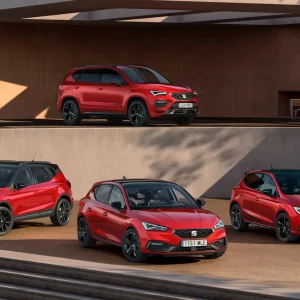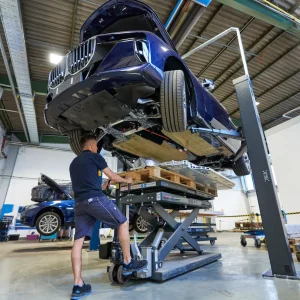With Ford, Kia and Nissan exiting the small car market, Suzuki revealed at the international launch for the new Swift, that 250,000 UK supermini buyers, a mix of fleet and retail, will not be able to buy like-for-like when changeover time comes around.
There is no doubt that just like the large estate market, the market for superminis has shrunk. However, we were told these buyers aren’t interested in small EVs, and because the B-Segment remains important to Suzuki, here we have the fourth-generation Swift. We say fourth, but there have been two others, but Suzuki is only counting from the similar-looking global first-generation Swift launched in 2004.
Outside, the styling for this Swift is more evolution than revolution, and even if you don’t park the previous generations of Suzuki side by side, you can see the visual family link. This time around, the Swift’s clamshell bonnet, LED headlamps with their L-shaped DRLs, and the Piano Black grille, are the biggest talking points of the design. Then there’s the blacked-out rear roof pillars, giving the appearance of a floating roof. In our opinion, it’s a generally successful update of a youthful-looking design.
Inside, there is a new dashboard, which is finished in a two-tone design, with the centre controls angled towards the driver, along with a 9in touchscreen infotainment display. There are also new front seats, which are heated, and are trimmed in the same geometric pattern as the contrasting trim on the dashboard. Despite being one of the smaller superminis available, at 3.86m long and 1.74m wide, the interior feels spacious front and rear – with enough room for four adults. Finally, the 265-litre boot is deep, with a low loading lip, and it can be extended to 980 litres with the rear seats folded.
Even the entry-level Motion is well-equipped, and despite the hard and shiny feel to the plastics, this Swift is as robust and well-made as it ever has been. We also like the physical switchgear for the ventilation. And although improved, we still feel the Swift’s infotainment could do with further work.
Built on an evolution of the outgoing third-generation Swift’s Heartect architecture, it is fitted with an all-new 82hp, 1.2-litre, three-cylinder petrol engine, with the compact and lightweight 12V ISG mild hybrid system. In manual form, this Suzuki is now a 99g/km car (108g/km with the CVT auto), capable of a believable 64.2mpg. The new Swift will sell on its lightness, and at just 949kg, the engine really suits this car, as it feels willing and smooth – without the need to work it hard to make good progress. This is helped by the slick, five-speed gearbox that is a joy to use.
A CVT automatic and four-wheel drive will also be available, but these weren’t available for us to drive at the launch.
On the road, Suzuki claims it has benchmarked models such as the Volkswagen Polo, but as our route didn’t take in any motorway driving, it’s hard to support that claim. However, things start off well with the standard 16in alloy wheels, wrapped in chunky 55 profile, 185-section tyres, which give a decent amount of absorbance. It is not quite at previous Fiesta levels, as the ride can sometimes feel choppy around town, but the steering is reasonably precise, and although there’s some body roll, it’s a tidy handler. Swift standard safety kit impresses, but the speed limit assistant, needed by EU law, seemed overkeen, and was fiddly to disable. Despite some key players exiting, there are still some keen rivals in the small car market. However, this new Swift is more than able to mix with the best of them and in our opinion, it deserves to do well.
Suzuki Swift 1.2 Mild Hybrid Motion
Fuel economy: 47.9-53.3mpg
CO2 (BIK %): 99g/km (24%)
Luggage capacity: 265 litres
Engine size/power: 1,197cc/82hp





